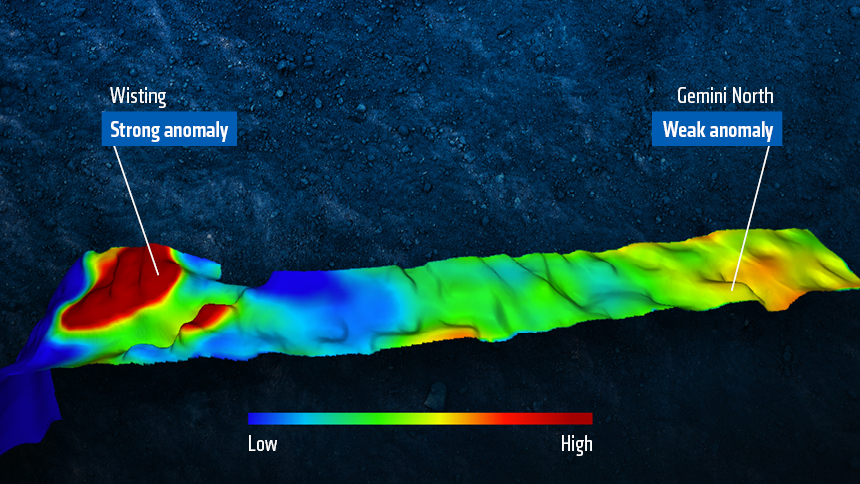Recent Barents Sea drilling results show close correlation with EM responses.
PGS acquired towed streamer EM data simultaneously with seismic in the Wisting area in 2015. This image shows a resistivity plot, superimposed on an initial interpretation of the structure. Wisting, to the south, is characterized by a strong anomaly of high resistivity, while Gemini North 7325/4-1 indicates a much weaker response, barely distinguishable from the background. The prospect may have looked promising on the seismic, but the EM doesn't back it up.
The weaker EM anomaly indicates a much lower hydrocarbon content, in line with the drilling result.
 Resistivity map through the main reservoir interval Wisting and Gemini North. The weaker Gemini EM anomaly indicates a much lower hydrocarbon content, in line with the non-commercial drilling result.
Resistivity map through the main reservoir interval Wisting and Gemini North. The weaker Gemini EM anomaly indicates a much lower hydrocarbon content, in line with the non-commercial drilling result.
Historically, successful wells in the Barents Sea have been shown to have a high EM response. Complementary data adds new layers of understanding. While seismic is the best measure of lithology, EM is more sensitive to changes in fluids. Correlating velocity, acoustic impedance and resistivity improves drilling results.
PGS is expanding its EM data library with new Barents Sea projects in the Harstad Basin and has an extensive MultiClient EM library in the BSSE.
Contact a PGS expert
If you have questions related to our business please send us an email.